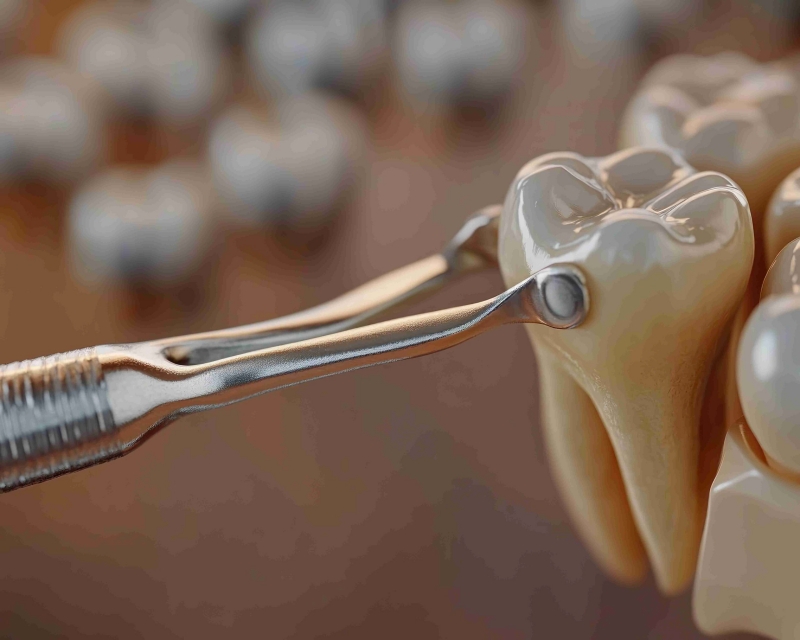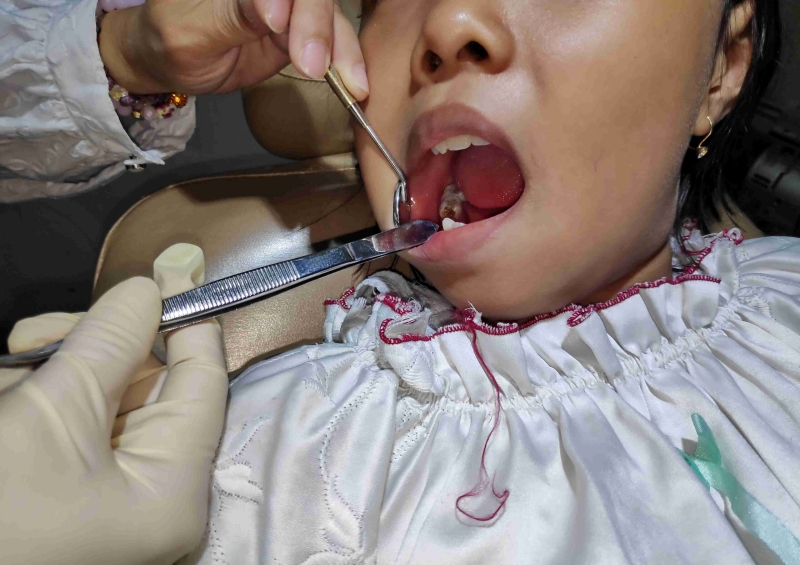
Although the name might sound unpleasant, Torectomy is not as scary as it seems. If your dentist finds a bone spur in your mouth and recommends removing it, let’s take some time to understand its meaning, causes, and how to handle it in this article.
When you run your tongue over your mouth and gums and feel something hard or bumpy, don’t immediately worry that it’s cancer or a malignant lump. It could just be a bone spur that has grown. Normally, bone spurs can develop in anyone and are treatable. However, if the bone spur starts affecting your daily life, your dentist may recommend surgical removal. If you’re concerned about having a bone spur in your mouth, wondering whether you should remove it or let it heal on its own, we’ve gathered all the important information for you.
Mandibular toris are bony growths or projections that gradually develop under the gums within the oral cavity. They often have an irregular shape and can appear as single lumps or clusters. Mandibular toris can occur in people of any age, although they are more commonly found in adults than in children.
The most common locations for mandibular toris in the mouth include:
Several factors can lead to the development of mandibular toris, including genetics, ethnicity, or certain habits that prompt the body to form bone in the wrong places. Some behaviors that may contribute to mandibular tori formation include:
Understanding these causes can help identify and address habits or conditions that might contribute to mandibular tori formation.

You can perform a self-check to see if you have mandibular toris in your oral cavity by following these steps:
If you detect anything unusual, consult a dentist to confirm whether it’s a mandibular tori and to discuss potential treatments.
Mandibular Tori Removal in the mouth is recommended for individuals experiencing the following issues:
If the mandibular tori is small and does not cause discomfort or interfere with daily life, removal may not be required. The decision depends on the dentist’s evaluation and professional advice.
Proper post-operative care instructions will also be provided to ensure smooth recovery and prevent complications.

The cost of Mandibular Tori Removal surgery typically ranges from 2,000 to 7,000 THB, depending on the location and complexity of the procedure.
It’s best to consult your dentist for a precise cost estimate based on your specific condition.
Following these guidelines will help promote proper healing and reduce the risk of complications. Always follow your dentist’s advice and schedule any necessary follow-up appointments.
Answer: Most mandibular toris are not painful and are not dangerous. They are not tumors or cancer. However, mandibular toris may interfere with chewing, become a breeding ground for bacteria, or obstruct the use of certain dental appliances. If the mandibular tori is large or problematic, a dentist may recommend surgery to remove it, but small ones typically do not require removal.
Answer: Mandibular Tori Removal is considered a minor surgery and usually takes about 30 to 50 minutes, depending on the size and location of the mandibular tori. As for pain, it is generally similar to the discomfort associated with wisdom tooth extraction, as local anesthesia is used during the procedure to minimize pain.
Answer: Mandibular toris are a type of bone growth in the mouth and will not go away on their own. They will stop growing once they reach a certain size. If you wish to have them removed, it is advisable to consult a dentist for further evaluation and treatment options.